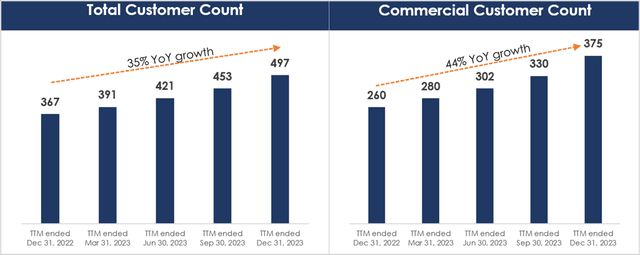VanEck Predicts $1 Trillion Valuation for Ethereum Layer 2s by 2030
April 5, 2024 | by stockcoin.net

VanEck, a prominent financial services company, has made a bold prediction that Ethereum’s Layer 2s, also known as L2s, will surge to a staggering $1 trillion valuation by 2030. These L2s are digital infrastructures layered atop Ethereum’s main blockchain, designed to enhance transaction processing while maintaining the core principles of security and decentralization. With scalability challenges being a significant hurdle for Ethereum, L2 solutions offer the promise of scalability through innovative mechanisms like Optimistic Roll-Ups (ORUs) and Zero-Knowledge Roll-Ups (ZKUs). VanEck’s analysis evaluates crucial dimensions of these L2 platforms to assess their potential success and longevity in a rapidly evolving crypto environment. This prediction of a trillion-dollar valuation reflects the interplay of various factors, including revenue generation, user adoption, and Ethereum’s positioning within the broader blockchain ecosystem.

Unpacking the L2 Phenomenon
L2s, or Layer 2s, are digital infrastructures layered atop Ethereum’s main blockchain. Their mission is to enhance Ethereum’s transaction-processing capabilities while maintaining its core principles of security and decentralization. L2 solutions handle transactions off-chain before finalizing them on the main blockchain, enabling Ethereum to handle a higher volume of transactions efficiently.
Ethereum, a pioneer in the smart contract realm, faces scalability challenges as user activity increases. Fees and transaction processing times also rise. L2 solutions, such as Optimistic Roll-Ups (ORUs) and Zero-Knowledge Roll-Ups (ZKUs), offer scalability through innovative mechanisms. These mechanisms bundle multiple transactions into single submissions to Ethereum, but they differ in their approach to transaction validation and finality.
VanEck highlights five critical dimensions for evaluating L2 platforms: transaction pricing, ease of development, user experience, trust assumptions, and the size and quality of their ecosystem. These factors determine the potential success and longevity of an L2 solution in the ever-evolving crypto environment.
Ethereum’s Scalability Challenges
One of the issues Ethereum and its L2s face is the ability to handle a high volume of transactions required for a global financial system. Ethereum deliberately limits its throughput to maintain its decentralized and secure nature. While this design choice is commendable, it hinders the network’s ability to process transactions at the speed necessary to support global finance.
To overcome these limitations, Ethereum’s roadmap has shifted towards L2 solutions. These solutions offload the majority of transaction processing from the main chain, easing the load on the Ethereum blockchain. Additionally, L2 solutions leverage ETH as the primary currency for transaction fees, reinforcing its value within the Ethereum ecosystem.
Revenue Models and the Future of L2s
L2 platforms have diverse revenue models based on their technological foundations. One of the primary sources of income for L2s is charging fees for transaction processing. These fees can include priority fees for users who seek expedited processing. VanEck’s report emphasizes the significant revenue potential of these models, highlighting the hundreds of millions in earnings generated by leading L2s through user transactions alone.
The interaction between L2s and Ethereum’s gas fees is crucial to L2 economics. L2 platforms regularly submit transaction data, settlements, and proofs to the main chain, leading to volatility in L2 costs. While these costs are mostly passed on to users, they also impact the platforms’ profit margins. However, innovations like Ethereum’s EIP-4844 aim to mitigate these costs by creating a specialized layer for L2 data postings. This layer offers a cheaper and more efficient method for L2s to interact with Ethereum.
The introduction of Blob Space by Ethereum is expected to revolutionize cost dynamics for L2s. This specialized data layer, exclusively for L2 postings, reduces Ethereum’s data storage burden and provides a cost-effective alternative for L2s to post transaction data. This innovation is set to significantly lower the gas costs associated with L2 data postings, further enhancing the economic viability of L2 solutions.
Evaluation of L2 platforms extends beyond technical capabilities and cost structures. Factors such as user and developer experiences, trust and security assumptions, and the size and vibrancy of ecosystems play crucial roles in determining the potential market dominance and success of an L2 platform.
Market Potential and Valuation of L2s
As we approach 2030, the L2 landscape is expected to undergo significant evolution. VanEck predicts a staggering $1 trillion market valuation for L2s. This prediction depends on several factors, including transaction revenues, the addressable market of end users, and the strategic positioning of Ethereum and its L2 extensions within the broader blockchain ecosystem.
The interplay between transaction revenues and the addressable market is crucial in determining the future growth and valuation of L2 platforms. The successful positioning of Ethereum and its L2 extensions, along with their ability to capture a significant market share, will contribute to the projected $1 trillion market valuation.
Overall, L2s hold immense potential to enhance Ethereum’s scalability and revolutionize transaction-processing capabilities. The diverse revenue models, technological innovations, and evaluation criteria outlined by VanEck provide valuable insights into the future of L2s and their role in the crypto ecosystem.

RELATED POSTS
View all





